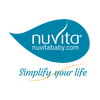10 mistakes to avoid when preparing a bottle of breast milk or formula

The preparation of milk for the baby, whether it is breast milk or formula, plays a crucial role in his growth and well-being, but some common mistakes can compromise the quality of the little one's nutrition.
Here are the 10 main mistakes to avoid when preparing a bottle of breast milk, powdered infant formula and liquid infant formula
1. Inadequate hand hygiene
Before any preparation, it is vital to wash your hands with soap. This simple gesture prevents contamination of milk, bottles and accessories.
The surface where it is prepared must also always be very clean.
2. Using non-sterilized containers or bottles
For newborns, especially in the first months of life, the use of sterilized containers and bottles is essential to avoid infections. Sterilization eliminates germs and bacteria, ensuring a safe environment for baby feeding.

3. Improper preparation of formula
You must carefully follow the manufacturer's instructions for preparing milk powder. Improper dilution can lead to inadequate nutrition or overfeeding.
4. Failure to sterilize milk powder
Boxes and packages of powdered infant formula, even when sealed, may contain bacteria which, in some rare cases, can cause infections. To reduce the risk you need to boil the water and cool it for half an hour, until it reaches 70°, before adding the formula.
5. Vigorous shaking
Shaking the bottle vigorously can introduce air, causing colic; in the case of breast milk, it can damage its proteins. It is important to shake gently to avoid these problems.

6. Uneven heating
It is best to avoid the microwave oven to heat milk as it can create spots that are too hot and dangerous, and as far as breast milk is concerned it can even alter its characteristics. To ensure even heating, it is best to use the “bain-marie” method or a bottle warmer .
7. Failure to control the temperature
It is necessary to ensure that the milk, whether breast milk or formula, is at body temperature, around 37°C, always checking a few drops on the wrist before giving it to the baby. It must always be lukewarm to avoid burns.
8. Not respecting storage times
Each type of milk has its own specific storage times. For powdered artificial milk, it is essential to follow the manufacturer's instructions for its correct preparation and storage, avoiding reusing leftover milk from previous feedings. At room temperature, both powdered milk and liquid formula can be stored for 2 hours after heating.
Breast milk can be kept at room temperature for a maximum of 4 hours, otherwise it is better to keep it in the fridge.

09. Thaw and refreeze breast milk
Thawed breast milk should never be refrozen and should be used within 24 hours if stored in the refrigerator. For powdered and liquid infant formula, it is best to avoid storing uneaten milk for future use.
10. Ignoring the child's satiety signals
Forcing your baby to finish the bottle can lead to overfeeding. It is important to respect your satiety signals to promote healthy eating habits.





